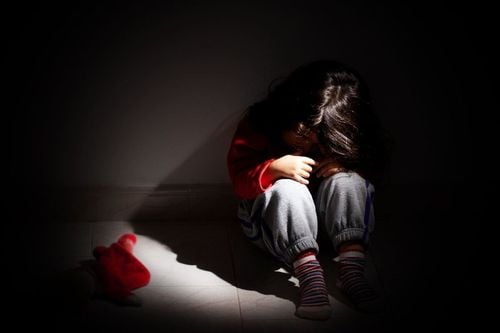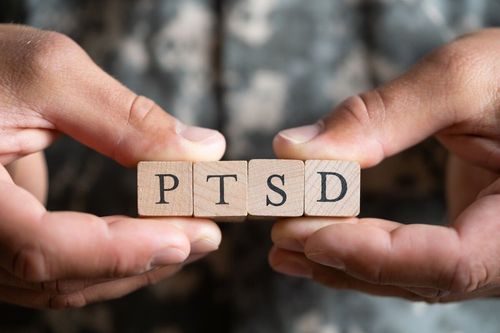Healing a developmental trauma means restarting the blocked development. To understand this better, it is worth analyzing the term "developmental trauma": Developmental trauma occurs when an important development in childhood suddenly stops. For example, someone may have experienced a trauma at the age of five that has resulted in the under-developed ability to set boundariea. In adulthood, this person may then only have the boundary setting skills of a four-year-old child.
Developmental trauma is therefore an obstacle that prevents natural development. This type of trauma often occurs at a young age because children and adolescents develop extremely quickly during this phase of their lives. Between birth and around the age of 16 or 17, the speed of development is incomparably faster than later on in adulthood. Although we can still develop at the age of 30 or 40, this is nowhere near as rapid as in childhood. This is why developmental trauma mainly occurs in the early stages of life.
My name is Rico Brunner, an energy field therapist. With this article, you'll learn how to recognize developmental trauma and heal it in the long run.
How do you recognize developmental trauma in adulthood?
Developmental trauma in adulthood often manifests itself in difficulties with basic skills that are normally considered "adult". These include, for example, taking responsibility, communicating needs clearly, standing up for oneself or the ability to solve problems independently. People who find these things difficult may have developmental trauma in these areas.
However, it is important to remain realistic: No one is perfectly developed in all areas. Developmental disorders are normal and do not automatically mean that there is some sort of trauma behind them. If someone is working on a skill such as setting boundaries and thereby making progress, it is usually a matter of a simple developmental disorder that can be overcome with a little effort.
We tend to speak of developmental trauma when there is hardly any improvement despite conscious efforts. It is important not to dramatize the situation. Exaggeration can make healing more difficult because it diverts the focus away from a solution-oriented approach. Dealing with the issue objectively is crucial to successfully overcoming developmental trauma.
How does bodywork help to heal developmental trauma?
Bodywork can be a valuable tool for healing developmental trauma - depending on the area in which the trauma originated. For example, if the trauma concerns emotional issues such as self-love, self-worth, self-acceptance or the ability to feel one's own needs, bodywork can have a very calming and regulating effect. It can support everyday life and facilitate the healing process.
Bodywork is particularly helpful for people who find it difficult to talk about their feelings or reflect on their inner processes. It strengthens inner power, conveys a feeling of security and activates personal resources. How people react to the bodywork sessions is crucial: In most cases, these should give strength, have a strengthening effect and promote the activation of inner resources.
However, there are rare cases in which a bodywork session can trigger excessive demands or reactivate a trauma. It is therefore important to pay attention to your own reactions. If these are predominantly positive and create a sense of safety and stability, bodywork is a valuable support in healing a developmental trauma. However, if it leads to confusion or loss of strength, it should be carefully considered whether another method is more suitable.
Can developmental trauma be healed without therapy?
Yes, many developmental traumas can be healed without therapy, even if this is often underestimated. During the course of our lives, we encounter many challenges that hurt, overwhelm or block us. But just as often we overcome such difficulties through our own behavior and through the people we meet.
A good social environment can play a crucial role. If we are lucky enough to have a supportive environment, developmental traumas are often "passively treated" in a completely natural way. Encounters with these people have a healing effect because they give our system exactly what it needs to strengthen itself.
Who hasn't experienced how refreshing it can be to spend time with someone who does you good? You often say: "It has done me a world of good. I feel much lighter and stronger." This is precisely a form of healing. Such positive encounters can help to overcome developmental trauma without conscious therapeutic intervention.
If you regularly surround yourself with people who strengthen and inspire you, developmental traumas can often heal themselves - simply through the way these relationships work.
How does self-care support the healing of developmental trauma?
Self-care can be a valuable building block in the healing of developmental trauma, but it also carries risks. If self-care is overdone or used incorrectly, it can actually hinder healing. An example of this is when every little challenge is overestimated, and a mountain is made out of a molehill. Such an exaggerated form of self-care can lead to problems being dramatized and intensified. In extreme cases, this can lead to re-traumatization.
On the other hand, constructive and positive self-care can promote healing in the long term. This means looking after yourself in a way that is empowering and supportive: by standing up for yourself, seeking help when you need it and creating space for recovery and stability. This kind of self-care promotes inner strength and helps a continuous healing of developmental trauma.
Thus, it depends on how self-care is exercised. If it focuses on empowerment, support and positive change, it can be a crucial factor in healing developmental trauma.
What are the common obstacles to healing from developmental trauma?
A common obstacle to healing developmental trauma is the assumption that it is not a trauma, but simply one's own personality. Many people say to themselves: "That's just the way I am. I'm just not good at talking about my problems." Or: "I'm not that sensitive. It's just a part of who I am." Thoughts such as "I'm just not good at setting boundaries, that's just the way I am" can block healing. Such beliefs prevent you from dealing with the issue at hand.
The consequence is that the developmental trauma is not dealt with. It is not just about facing up to the trauma itself, but rather about activating your inner strength and gradually overcoming the wounds caused by the trauma.
Developmental trauma can be healed if the problems are tackled in small, attainable steps. It is important not to overwhelm yourself, but to work continuously on building up your inner strength and allowing changes. This process makes it possible for a lasting overcoming of the trauma.
What factors influence the healing time of a developmental trauma?
In my view, the most important factor influencing the healing time of a developmental trauma is the question: "Am I retraumatizing myself or not?" Re-traumatization is the biggest challenge in trauma therapy. If the trauma is activated again and again, the healing time can be extended indefinitely. You may have the feeling that something is changing, but this change is often not an actual healing and can massively deplete a person's vitality.
To shorten the healing time, it is crucial to focus on your own strengths and recognize where the trauma has left behind weaknesses. The aim is to strengthen these weaknesses in a targeted manner, as this makes the trauma less impactful and tragic.
Here is an example: Suppose someone is afraid of being alone in the woods at night. An ineffective strategy would be to either never go into the forest or always take a large group of people with you. Such solutions feed the fear and may even increase it. It would also make little sense to cut down the entire forest to avoid the problem.
Instead, you should learn to deal with the situation with a step-by-step approach:
- The first step could be to go for a walk alone at the edge of the forest during the day until you feel safe being there.
- Then you could continue going into the forest until you feel comfortable inside the forest.
- The next step could be to go into the forest at dusk and slowly get used to being there at this time of day without fear.
- Finally, you could venture into the forest after dark until you feel safe in this environment.
This approach explains very well how effective trauma therapy works: It is about approaching challenges in feasible steps, activating your inner strength and not feeding your fear.
Avoiding re-traumatization and focusing on gradual strengthening is therefore the key to accelerating the healing time of a developmental trauma.
Which exercises promote the healing of developmental trauma?
There is no specific exercise that directly heals developmental trauma. Instead, there are exercises that strengthen and do good, which can have a positive influence. These exercises can be very individual: For some people, strength training has a strengthening effect, while others find healing through yoga, meditation or breathing exercises. Everyday activities such as chopping wood, cleaning the kitchen or playing cards can also help to promote inner strength.
The key is to find exercises that do you good and give you strength. This gradually alleviates the effects of the trauma until it is finally perceived as healed. It is important to understand this: Trauma itself cannot be "erased", but rather the injuries caused by the trauma can be healed. When these injuries disappear, it causes the trauma to lose its meaning, and the sense of healing arises.
It is therefore not about tackling "the" trauma directly, but about working on and overcoming the individual weaknesses or injuries that result from it. Exercises that strengthen you and are good for you are a central part of this process.
How can I recognize that my developmental trauma or the injuries caused by it have healed?
You realize that developmental trauma or the resulting injuries are healed when you face previous stressful situations more naturally and freely. This means that there are no more blockages or insecurities, and you can behave in a way that corresponds to your inner nature.
An indication of healing is that you no longer feel stress when you are confronted with situations that used to cause fear or insecurity. At the same time, your behavior feels coherent and authentic, and even in retrospect you have no doubts or dissatisfaction with it. You feel that your actions and reactions are in line with who you are.
When this understanding is reached, you can be sure that the developmental trauma or the injuries that resulted from it have been successfully healed.
Conclusion – How Can Developmental Trauma Be Identified and Healed in the Long Term
Healing developmental trauma requires understanding, patience, and a gradual, solution-oriented approach. Developmental trauma results from blocked development during childhood, which impairs certain abilities in adulthood.
To heal, it's essential to avoid retraumatization and instead focus on activating inner strengths and overcoming emotional wounds step by step. Body-based work, self-care, empowering exercises, and a supportive social environment are key factors. Ultimately, the goal is to experience situations that once triggered insecurity or fear with a renewed sense of freedom and natural ease.






